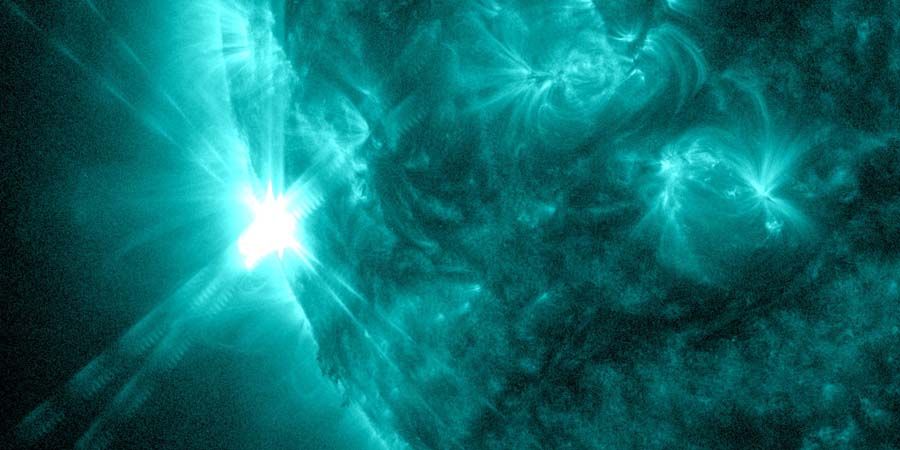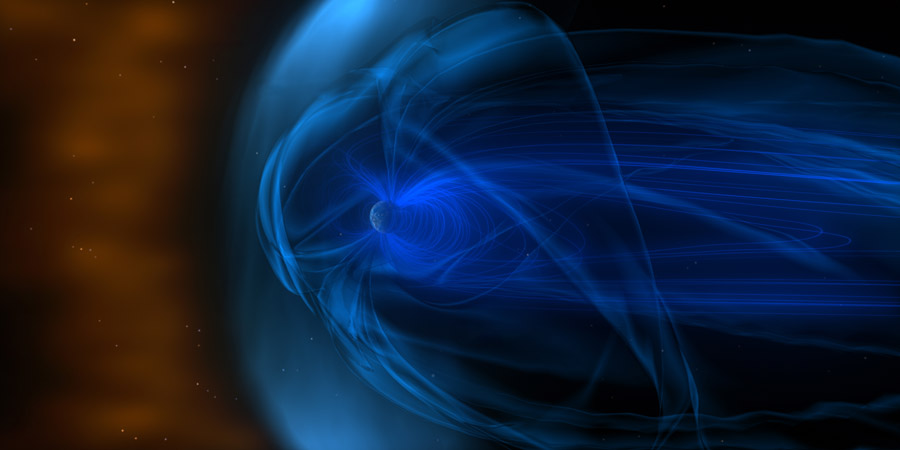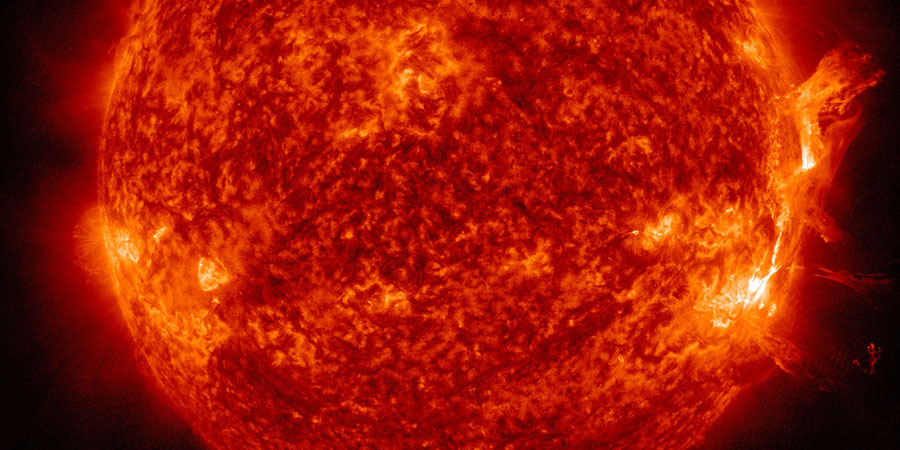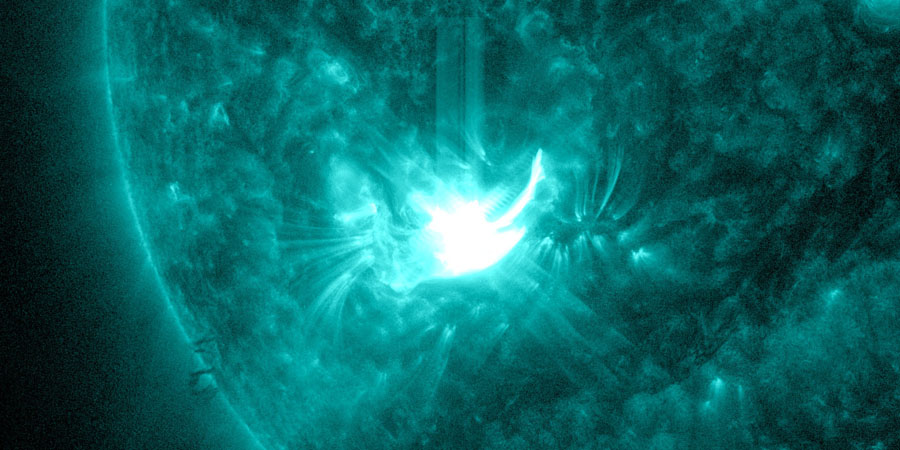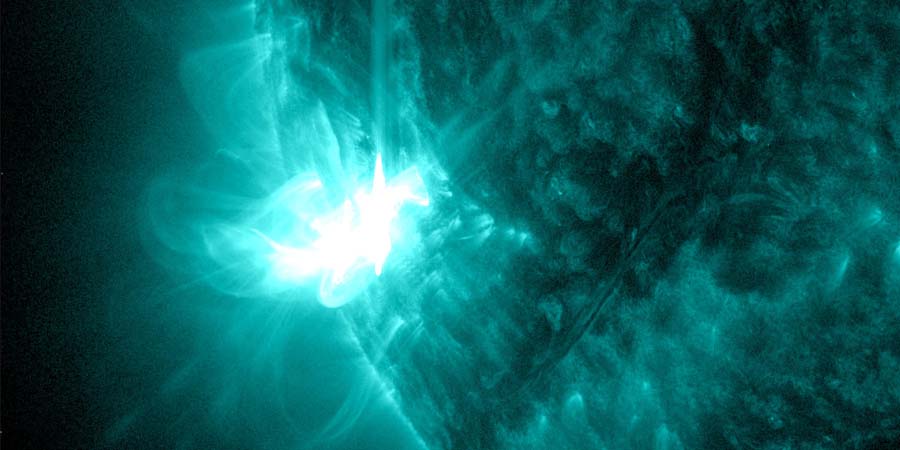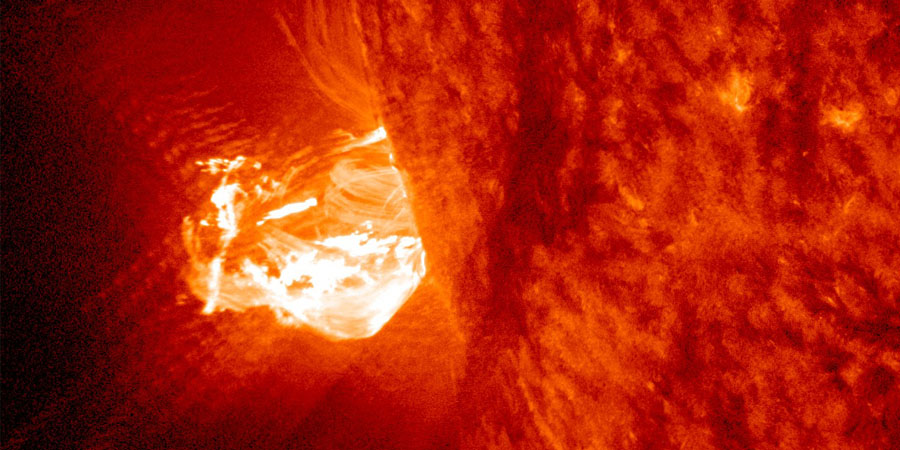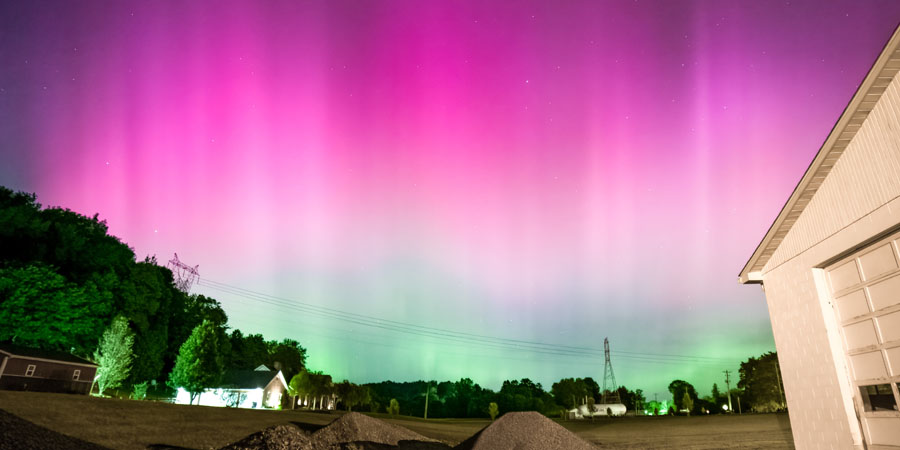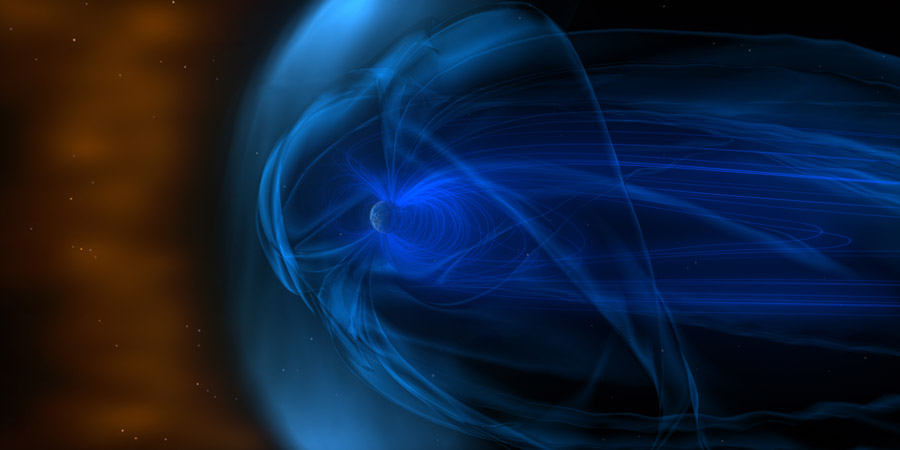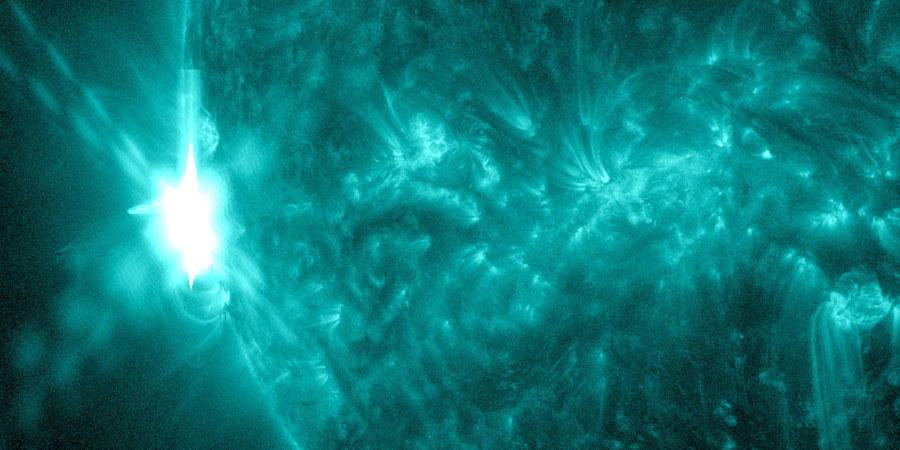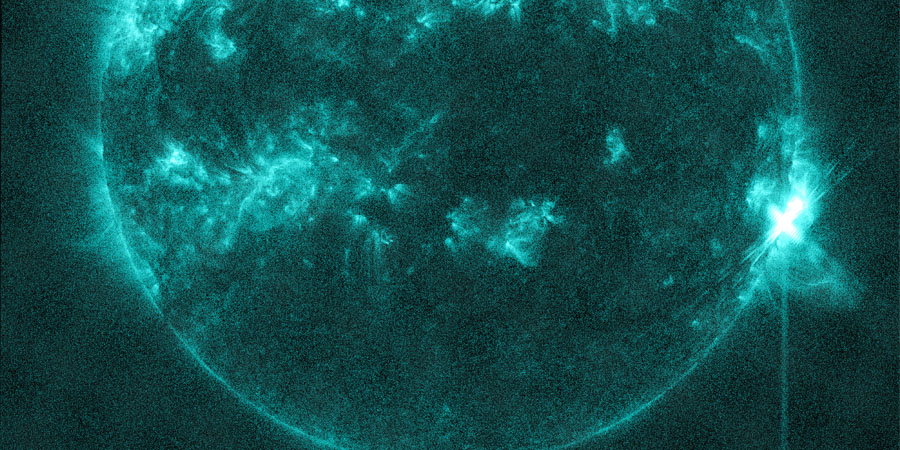Latest news updates Subscribe
Old sunspot region 3664 returns with an M9.3 solar flare!
Sunday, 23 June 2024 15:15 UTC
Old sunspot region 3664 and more recently 3697 is back for a third visit of the earth-facing solar disk. The region received sunspot number 3723 and immediately announced its return with an impulsive and non-eruptive M9.3 (R2-moderate) solar flare that peaked at 13:01 UTC. It has decayed heavily as expected of course but there still seems to be some gas in the tank for major eruptions! Exciting!
CME impact, X1.5 solar flare
Monday, 10 June 2024 17:16 UTC
The anticipated M9.3 coronal mass ejection has arrived at our planet. As expected, it looks like a glancing blow with the solar wind speed increasing to a modest 430km/s with the interplanetary magnetic field strength (Bt) increasing to about 15nT. A minor G1 geomagnetic storm watch is in effect for the remainder of today.
M9.3 solar flare, S3 proton storm, Earth-directed CME
Saturday, 8 June 2024 15:29 UTC
Sunspot region 3697 has been relatively quiet the past few days as she made her way towards the west limb but she was not planning to exit stage right without one final song. At 01:49 UTC this night the region produced a highly eruptive long duration M9.7 (R2-moderate) solar flare.
Double impulsive X-class flares
Saturday, 1 June 2024 15:48 UTC
Two X-class solar flares (X1.1 and X1.3) took place during the past 24 hours peaking at 22:03 UTC (31 May) and 08:48 UTC (1 June). These were impulsive events which originated from sunspot region 3697. Both of these events were not eruptive and did not launch coronal mass ejections.
X1.4 solar flare from sunspot region 3697
Wednesday, 29 May 2024 19:13 UTC
Ex-3664 which is now numbered as sunspot region 3697 is at it again this time with a long duration X1.4 solar flare (R3-strong) that peaked at 14:37 UTC.
X2.9 solar flare, Welcome back 3664?
Monday, 27 May 2024 17:22 UTC
A major X2.9 solar flare (R3-strong) took place today peaking at 07:08 UTC. The flare came from a sunspot region just behind the south-east limb. This is likely the anticipated return of old sunspot region 3664 which was the source of many major X-class solar flares during its previous visit of the earth-facing solar disk and an extreme G5 geomagnetic storm which was the first of its kind in 21 years.
Let's compare! Halloween 2003 VS May 2024 Solar Storms!
Friday, 17 May 2024 18:33 UTC
Today we have a really special news item for you! We have a guest post made by Christian Harris from Space Weather Trackers. Christian is a friend of the website an has made very well received guest posts before. He has some serious big brain knowledge about everything space weather related. I am sure many of you have heard of him before. He is here to shed some light on the Extreme G5 geomagnetic storm of last weekend and the famous Halloween 2003 solar storms. Please read his article below and gain some fascinating insights on two of the strongest solar storms in modern times. It is well worth the read! If you are interested in Christian's work be sure to follow him on Facebook and follow his Space Weather Trackers Facebook page. Christian, the stage is yours:
Coronal mass ejection impact, New website feature!
Friday, 17 May 2024 17:03 UTC
A coronal mass ejection impact was detected at DSCOVR around 12:40 UTC today. The north-south direction of the interplanetary magnetic field (Bz) flipped southward to about -12nT to -12nT. A minor G1 geomagnetic storm watch is in effect for the remainder of the day.
More X-flares!
Wednesday, 15 May 2024 18:40 UTC
Sunspot region 3664 continues producing major solar flares even now that it rotated behind the west limb. An X3.4 solar flare that peaked at 08:37 UTC was highly eruptive and an impressive coronal mass ejection could be seen on LASCO coronagraph imagery from SOHO. The coronal mass ejection is however, as you might have guessed already, not aimed at our planet.
X8.7 solar flare
Tuesday, 14 May 2024 19:42 UTC
What a way to sign off! Sunspot region 3664 (R3-strong) is now on the west limb and waves goodbye by producing the largest solar flare of Solar Cycle 25 which peaked at X8.7! Wow! There isn't any coronagraph imagery available from SOHO yet, but we do know the solar flare was eruptive but based on coronagraph imagery from STEREO A, the resulting coronal mass ejection is likely not aimed at Earth.
Latest news
Latest forum messages
Support SpaceWeatherLive.com!
A lot of people come to SpaceWeatherLive to follow the Sun's activity or if there is aurora to be seen, but with more traffic comes higher server costs. Consider a donation if you enjoy SpaceWeatherLive so we can keep the website online!

Space weather facts
| Last X-flare | 2025/01/04 | X1.85 |
| Last M-flare | 2025/01/22 | M1.3 |
| Last geomagnetic storm | 2025/01/04 | Kp5 (G1) |
| Spotless days | |
|---|---|
| Last spotless day | 2022/06/08 |
| Monthly mean Sunspot Number | |
|---|---|
| December 2024 | 154.5 +2 |
| January 2025 | 145.2 -9.3 |
| Last 30 days | 163.2 +45.8 |
